Kiba-dachi is used in the Shotokan katas. In terms of its combat usefulness, no stance provides greater sideways strength or worse frontal defence than this stance. People often describe this stance as strong to the side because its width enables it to resist force from the side. However, that is just a by-product of its real purpose, which is to deliver force sidewise, or as a landing position from a side technique - most likely a side kick.
The English name, "horse-stance" or "straddle" stance gives a clear indication of how the stance should look, although it's commonly misinterpreted, with students sinking much too low or spreading their feet too far apart, making mobility and proper spinal posture virtually impossible.
However, there is room for interpretation. The lower you sink, the more stable the stance becomes during sideways attack, but there is a sacrifice in mobility. Therefore, I advocate the higher posture, which may sacrifice a little sideways strength, but it gains a lot of movement speed.
The stance has fast sideways mobility, and it's the perfect position from which to deliver a side kick, a side elbow, or side back-fist strike. However, your back two limbs are removed almost completely from any role in a combat, making this primarily useful only as a transitional stance, or a stance of necessity should you find yourself attacked from the side.
Technique:
| # | Description |
|---|---|
| 1. | Your feet should be placed two shoulder-widths apart, and parallel to each other. They face directly forwards. Your knees should be slightly bent and your back should remain upright and naturally straight. Push your knees outwards, creating tension in your legs. The higher your stance, the harder it will be to do so, and you will naturally discover the height at which you are comfortable. |
| 2. | By maintaining tension in your knees and the muscles of your legs, you create the strength to resist oncoming charges from the side. By relaxing those muscles, you enable yourself to move quickly. In training, we practice with tense muscles to improve their overall tone and readiness. In combat, you must use the condition that suits your current requirement. It's unwise to hold your muscles tense, and expend valuable energy, if your opponent is out of range, and poses no immediate threat. |
| 3. | Your weight should be distributed evenly across both feet. Although there is no set arm position for this stance, as it's a combat position, it makes sense to raise your arms in a guard so that you can parry attacks or counter with attacks of your own. |
Common mistakes to avoid:
- Ensure that the outside edges of the feet do not turn out.
- Ensure that your feet are not too far apart.
- Ensure that your knees are pushed out over your heels, and do not collapse into a capital A shape.
- Don't let your butt stick out - roll your hips up to avoid it.
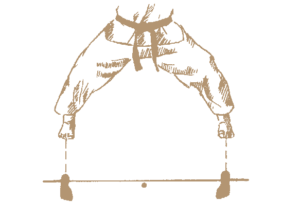
Kiba-dachi position.
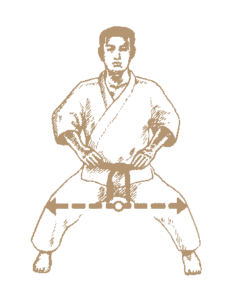
Knees strongly obtuse along the extension of the line.
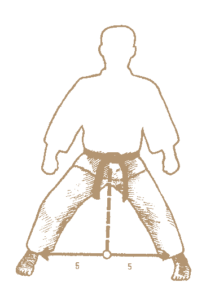
Weight distribution in the leg posture should be in a ratio of 1 to 1.
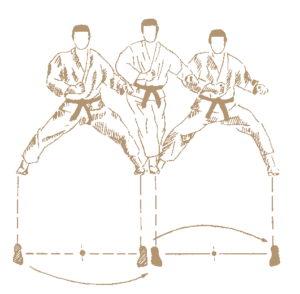
Moving in kiba-dachi. Maintain same head level.
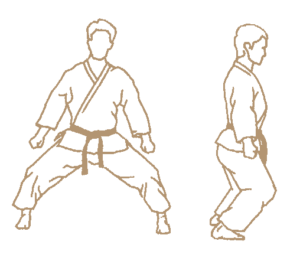
View of the kiba-dachi posture.
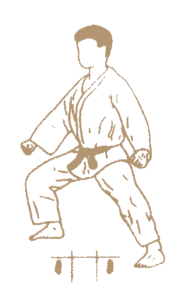
View of the kiba-dachi posture.
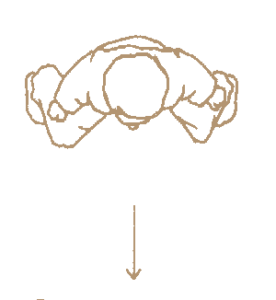
View of the kiba-dachi posture.
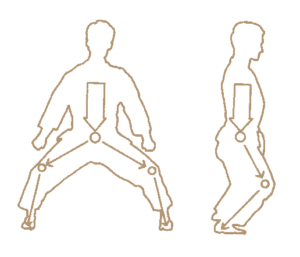
Distribution of gravitational forces in kiba-dachi.

Putting feet in kiba-dachi in the exercise on stumps.






